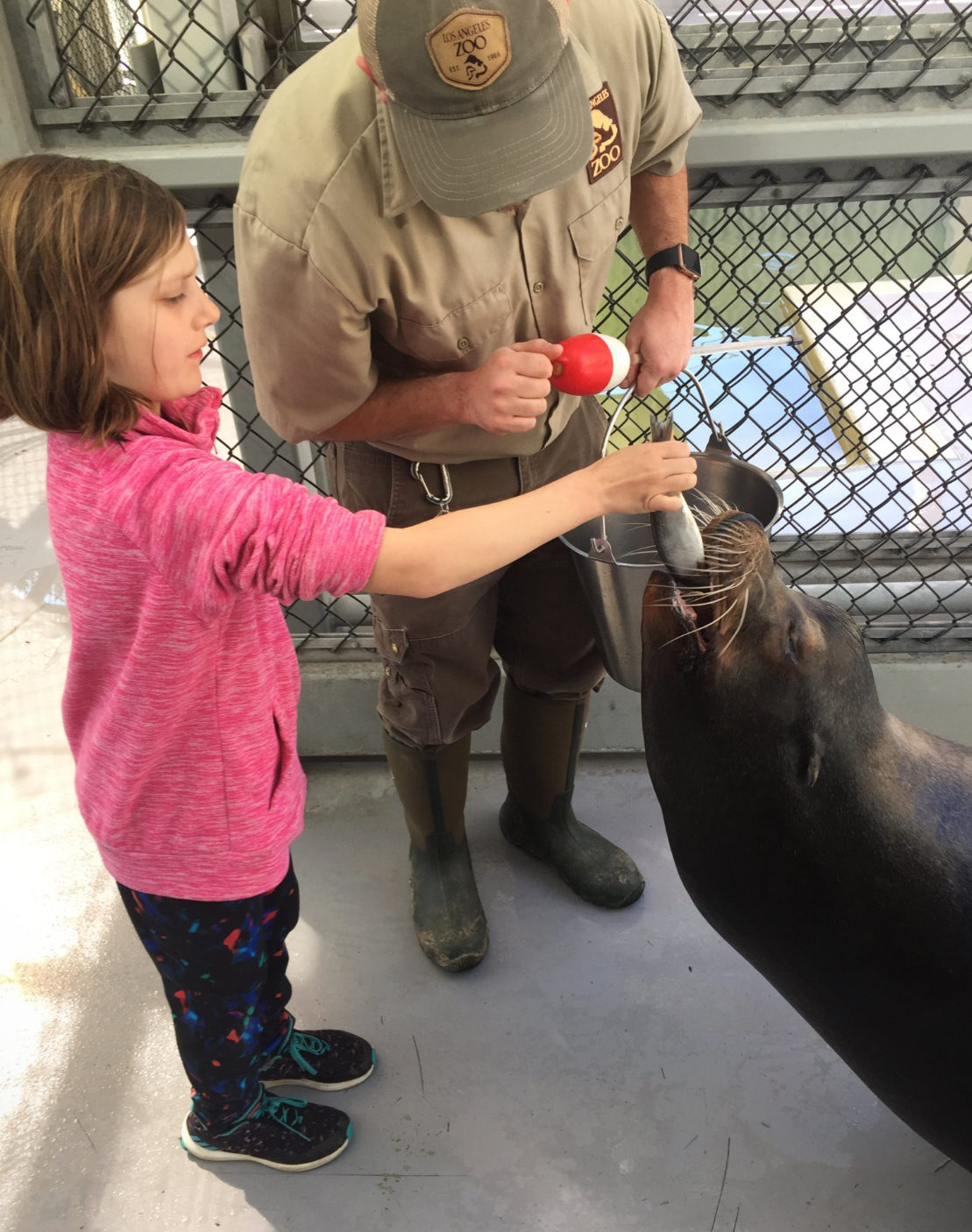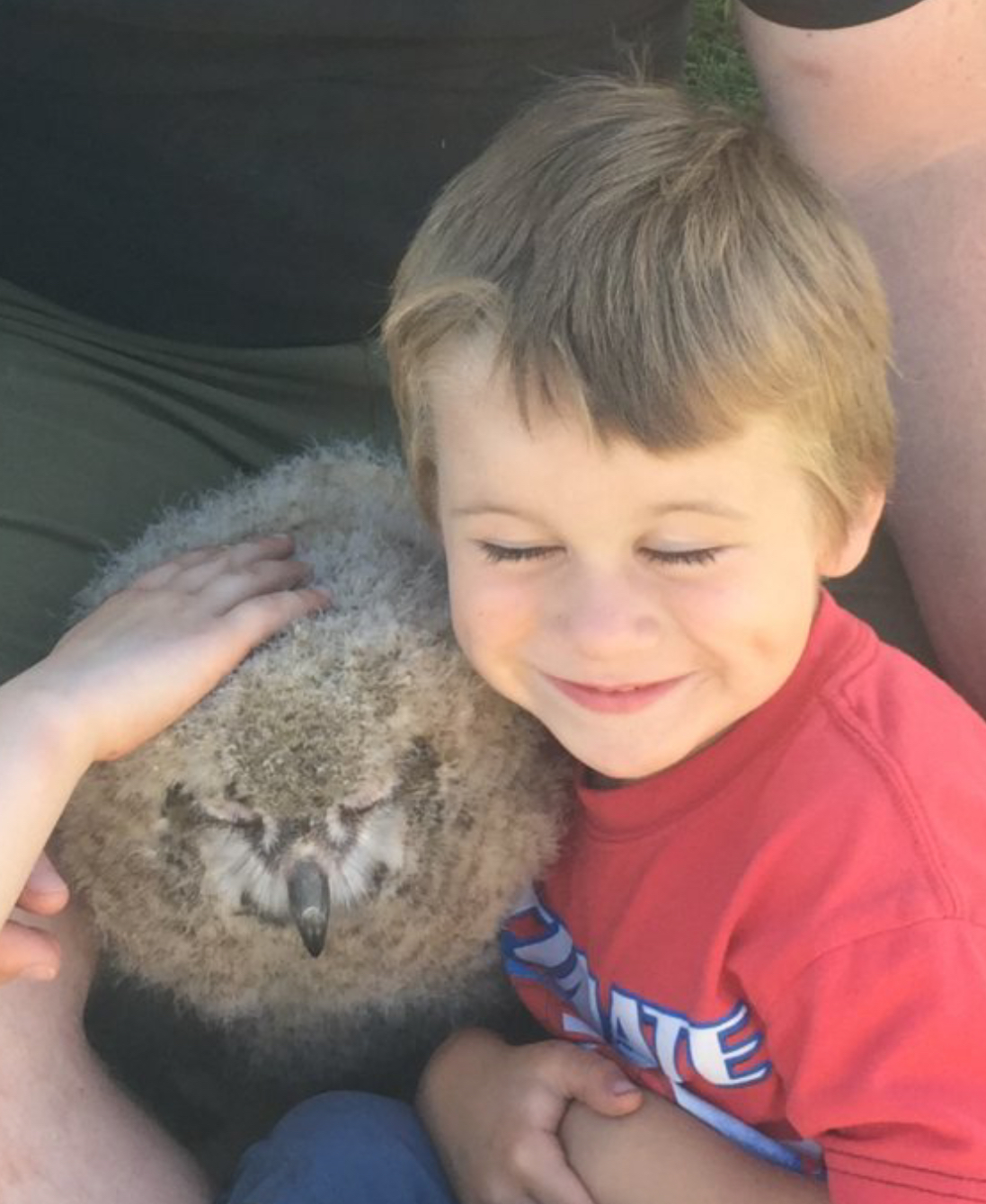
If you’ve ever visited a zoo, you have probably learned about enrichment. You might have heard someone talking about it, read a sign describing it, or seen it displayed in animal habitats. While the term seems simple, it can be hard to define. Enrichment has become a commonly used but often undefined word within the zoo community. Many use the term broadly without defining what it is, what it isn’t, and even why it is utilized. Because of this, anything and everything can become “enrichment” if you want, diluting its meaning and purpose.
People love to jump onto bandwagons, don’t we? If we see something as positive, we become quickly drawn to it, often without question. We can latch onto certain words in agreement before taking the time to grasp or understand their meaning. However, there is a danger to using any subjective term when lacking clarity. It results in words being misused, superficially understood, and incorrectly applied. In some cases, I think this is what has happened to the term enrichment.
Sure, who doesn’t like the word enrichment? The word enrichment oozes positivity and warm feelings. The Cambridge Dictionary defines enrichment as ‘the act or process of improving the quality or power of something by adding something else.’ Who doesn’t like that? However, issues arise when words develop meanings tied to assumed actions that limit the word’s power or potency. The understanding becomes so narrow that its purpose becomes lost or convoluted. Then, something vital to animal welfare becomes simplified to an automatic and routine checklist activity that lacks substance.
A Very Brief History of Enrichment

Like many things within the animal community, enrichment has come a long way in the last couple of decades. Enrichment had to overcome many obstacles and challenges to become the routine and widespread practice we have today. Before current enrichment practices became commonplace in zoos, it was up to the zookeepers to decide what they felt their animals needed.
What we now define as enrichment is a relatively new concept that goes back to the 1920s and was better developed in the 1960s and 1970s. The aim was to improve the sterile and under-stimulating environment common for most zoo animals. The objective was to create environments and opportunities that allowed animals to make more choices and showcase a greater range of natural behaviors. Dr. Hal Markowitz, one of the pioneers of this concept, promoted adding manipulation devices to modify the animal habitats based on operant principles and natural history. He originally called the addition of these devices “behavioral engineering” and later “occupational therapy.”
This concept slowly took hold as more zoos saw its benefits. In 1985, the USDA rewrote sections of the Animal Welfare Act to mandate that enrichment be provided for certain zoo animals. This update was added primarily to address the care of laboratory primates. Specific research studies were conducted to monitor and evaluate the role enrichment, habitat size, and social groupings had in the laboratory primates’ well-being. The research supported enrichment and gave the USDA grounds to mandate these requirements. Unfortunately, the wording regarding what constituted enrichment in an animal facility was very relaxed. Because of these unclear mandates, the animal community could call any additions or modifications “enrichment” with few parameters or framework. However, just because something is called “enrichment” does not mean everything added or given is actually enriching. If it is not enriching, can it, therefore, be called enrichment? It can do more harm than good to think we can assume what something is, especially if we do not first take the time to define it.
Today, the Animal Welfare Act enforces enrichment requirements for many facilities housing and exhibiting animals. In addition, a developed and robust enrichment program is required for accreditation by the AZA (American Zoological Association). But today, because enrichment is now expected and commonplace, many zoos and their employees don’t always have a well-defined understanding of it.
Addressing the Elephant in the Room

Before attempting to define enrichment, something needs to be addressed. The reason for enrichment is to “improve” something currently inadequate and lacking. While many talk about enrichment as only positive, that is just one side of the coin. It does no good to ignore the other side. The other side of the coin addresses the negative. That is the reason or purpose enrichment is needed in the first place. Enrichment is necessary only because we first believe something is lacking or inadequate.
To understand enrichment, we need a realistic perception and honest view of the animals in human care. Among the many pros are also the cons, which are the consequences and difficulties of life in managed care. Housing animals is often challenging, regardless of how good one’s management practices are. There is no benefit in believing otherwise. Depending on the species’ requirements, a wild animal activity budget often looks very different from a zoo animal’s activity budget.
Much of an animal’s life in captivity is managed for them. Zoo personnel choose which animals to get, where to put them, what and when they eat, their medical care, social groupings, etc. This limits an animal’s ability to operate freely and make choices, which has been shown to decrease their overall welfare state. Therefore, it is the sole responsibility of those stewarding animals to understand the realities of those within their care.
Like humans, animals were created to work and have a purpose. In the wild, they must work to find food, maintain social groups, find a mate, and a safe environment, among other things. When we remove them from that context and place them in a controlled and maintained environment, we remove most of that work and purpose from them. To fill and compensate for that void, animals must be given constructive occupational activities to fill their time.
Ideally, environments should be created in a way that doesn’t rely on enrichment. Enrichment would then be what it should be: a supplemental component of the much larger husbandry practices required for the optimal care of animals. It helps fill the gaps that a captive environment cannot provide.
What is Enrichment, Not?
Enrichment is probably easier to understand by first defining it by what it is not rather than what it is

Enrichment should not be a band-aid fix that attempts to correct improper care. It should not be approached as a way to “fix” a deprived environment but to purposefully and proactively enhance the optimal well-being of the animals in human care. Ideally, the goal should be to create environments that are inherently enriching for those who live in them.
Enrichment is no longer a substitute for poor habitat design, improper planning, understimulating environments, and unsuitable social groups. Instead, we should strive to see animals thrive in complex environments that allow for an array of species-typical behaviors rather than focusing on a robust enrichment schedule to compensate for them.
Enrichment is not a set checklist or calendar or something to be marked off the list of to-dos for the day. There is no one-size-fits-all approach to it. Its failure or success is solely based on the individual’s perception, reality, and current context. The metrics and values placed on enrichment constantly change, depending on many factors. Enrichment is not a static process but a dynamic one. Therefore, a calendar or checklist is only as good as your ability to change and re-evaluate it.
Enrichment is not an item or object. To qualify as enrichment, the item given or added has to measurably and quantifiably enrich the animal’s well-being. It indicates an ongoing process to promote desired behavioral goals that allow animals to live fuller, occupied, and improved lives. The goal is not what is meaningful for people but to evaluate in light of meaningful behavior from the animal. They are the judge, not us, on what is truly enriching. Just because something is novel does not mean it is enriching.
Enrichment is not the sole job of the zookeeper. It is the responsibility of all zoo staff. Those who plan enclosure design, purchase and choose animals, pick animal social groupings, develop the enrichment program, provide time and finances for enrichment activities, ensure accountability and ownership, and train and support staff on the desired implementation all hold responsibility. Execution and implementation are just one piece of the much larger management practice for animals in captivity.
We should evaluate and even attempt to move beyond the current notion of “enrichment.” Enrichment describes actions that enhance, improve, or add to a deprived environment. Moving forward, this should no longer dominate our thinking for the modern zoo as we manage and design new facilities. Instead, we must strive to plan and provide optimal conditions in every aspect of our captive animal management practices. Environments should be managed to create habitats that are no longer deprived. Enrichment then can be in its proper place, simply a bonus.
Enrichment is just one aspect of good husbandry management practices
While enrichment is important, it should not be compensation for poor care and improper planning and management
What is Enrichment?

Now that we know what enrichment is not, can we define it? Unfortunately, there is no agreed-upon definition of enrichment in the animal field. While there are some similarities, every institution has a definition or explanation of what enrichment means to them. Even what we call it can be different. Some institutions call it enrichment, behavioral enrichment, environmental enrichment, or husbandry enrichment.
Enrichment Definition(s)
“Behavioural enrichment is the art of designing and offering behavioural opportunities for captive animals to exercise species-typical behaviours and, where possible, to mirror opportunities found in nature”
– Markowitz and LaForse, 1987
“A husbandry principle that seeks to enhance the quality of captive animal care by identifying and providing the environment stimuli necessary for optimal psychological and physiological well-being”
–Wikipedia definition
“A process to ensure that the behavioral and physical needs of an animal are being met by providing opportunities for species-appropriate behaviors and choices.”
– AZA definition
“An evolving process that aims to enhance the welfare of captive animals by identifying and providing the environmental stimuli that are. Necessary to ensure an animal’s psychological and physiological needs are met. Also known as behavioral enrichment and enrichment.”
-ABMA definition
Enrichment is a husbandry principle that attempts to provide necessary opportunities for optimal psychological and physiological well-being of captive animals by increasing an animal’s range, diversity, and choice of behavioral and occupational opportunities.
– (My own)
Enrichment is an essential part of good husbandry and just as important as other management practices like nutrition, medical care, training, and record-keeping
Is there anything we are doing for animals that they can do better for themselves if given the opportunity?
Enrichment is a process or phenomenon, not necessarily a “thing.” Its goal is to create a responsive environment that allows animals to control aspects of their environment. Enrichment is not stagnant; it is an ongoing process. No form or type of enrichment is effective indefinitely. Habituation (decrease in stimulus response) is often a fast process, especially with novel stimuli. Because of this, there should be an ongoing process of constant fine-tuning. This is the risk of narrowing your zoo enrichment program down to simply following a routine calendar or checklist. The process, development, and evaluation aspect of enrichment can become lost. The enrichment process should be constantly refined and evaluated to give animals more control and choices in their own lives.
Enrichment considers an animal’s psychological and physiological states holistically. Both aspects are crucial to enhancing the overall quality of life for animals. Physical and mental stimulation are essential components of enrichment. They are equal in importance and go hand in hand. Enrichment aimed at an animal’s psychological state is often called cognitive enrichment. Animals that can engage in suitable mental challenges tend to show fewer problematic behaviors, adapt more easily to change, and enjoy a higher level of positive well-being. Behaviors encouraged through enrichment to improve an animal’s physical state are important to captive environments where inactivity and boredom can be commonplace. Enrichment can reduce stress and improve physical condition by focusing on both the body and the mind.
Enrichment aims to stimulate appropriate species-specific behaviors. This accounts for the repertoire of natural behaviors necessary for each species to stimulate appropriate behaviors. Some behaviors are strongly tied to the well-being of a species. However, it does not forget about the individual. A behavior required for one species may not be for another, on a species and individual level.
Enrichment should be viewed on multiple levels: infrastructurally (habitat design/staging/size, social groups, etc.) and specifically (daily management additions). It should be a part of all aspects of husbandry management practices. Every feeding opportunity is a chance to provide enrichment. How, where, when, and what you feed can enrich an animal’s experience. Habitat furniture updates and changes should be thought through in light of enriching specific behavior. Then, changing up a habitat is not just something you have to undertake but an opportunity to further enrich your animal in multiple ways.
The process of enrichment should be defined in terms of its purposes. Modern zoo management practices must shift their focus from “what” to “why.” Instead of, “What am I going to give today?” Shift your thinking to “Why am I giving this today?” This is the hardship of trying to narrow down and define enrichment. Multiple variables influence enrichment depending on the purpose that is given to it. Ask yourself this question: What would this animal be doing if it were an agent of its own life?
Examples of Purposes:
- Decrease abnormal behavior
- Enabling an animal to cope with challenges normally
- Increase the behavioral repertoire
- Provide opportunities to achieve behavioral goals
- To give animals a wider degree of control
- Allows animals to carry out appetitive components of behavior
The weight to which these statements are evaluated changes how the enrichment process is implemented. Rather than defining enrichment, it opens up complications and contradictions. One issue with viewing enrichment through its purpose is the difficulty of our definitions. What does “normal” look like when animals have a wide range of plasticity to various environments? What behaviors should animals increase or decrease? Which coping responses show stress and suffering versus an animal appropriately responding to challenges? Another consideration is the weight we give each purpose. Can we “rank” the importance of these purposes? Is one better than the other? Many complex ethical and practical issues can arise when planning and implementing enrichment. This shows the challenge of defining enrichment as its optimal use and form depends largely on its context.
Enrichment is defined by its output and must be evaluated to determine if it enriches an animal. If enrichment is characterized by its measurable qualities, then there must be something against which it can be measured. How you will measurably identify success or failure is the responsibility of who gives it. The one who gets to decide the outcome is the animal. We don’t focus on what we give them; we focus on what an animal’s behavior tells us. Unfortunately, what is meaningful to an animal cannot always be measured. If given the choice, do we choose what is meaningful over what can be measured? All behavior is meaningful and important and tells us what they need, but we must learn and be willing to listen. Measurement must take into account scientific knowledge as well as animal behavior. There must be a framework that takes all of this into account.
We cannot call something enrichment simply because it is novel or perceived to be beneficial.
Some facilities no longer use enrichment as a general term; they use terms such as Enriched Experience, Environment Refinement, or Enriched Behavior.
There have been significant advances in how we approach and value animal welfare in captive wildlife. However, our definitions and operational understanding of them often lag. Enrichment has become a vital and pivotal husbandry management technique in the lives of captive animals. Because of this, we must value understanding the part it plays in animal facilities.
To summarize, enrichment can be hard to define. It is largely based on the perception of who it is being given to. The only window we have into that perception is measurable behavior based on the observer’s assumptions and understanding. I hope that no matter how you interpret and define it, you have a better grasp of what enrichment is and is not. Ask yourself if you have any misconceptions or barriers in your animal facility. If so, how might you overcome these barriers to move forward for the increased welfare of the animals in your care?
“Mastering knowledge about what works in getting others to perform in the manner you wish is not the same as providing opportunities for them to choose paths that are enriching.”
– Hal Markowitz, Enriching Animal Lives, 2011











